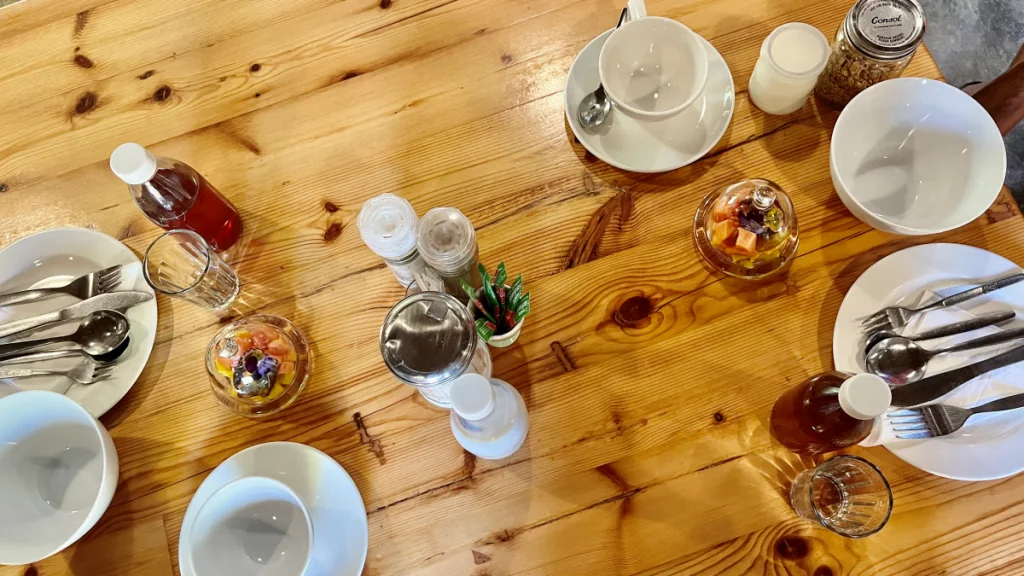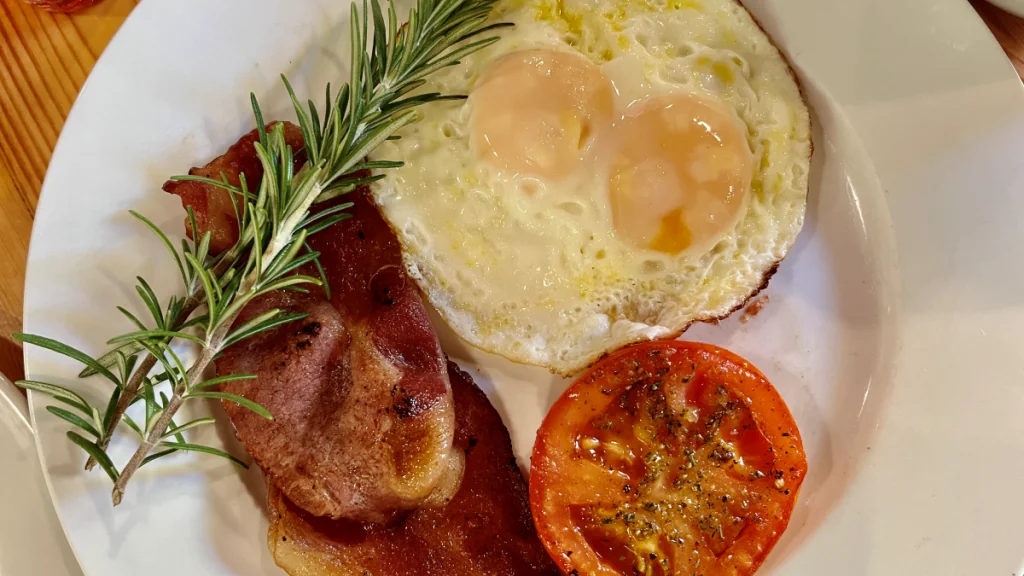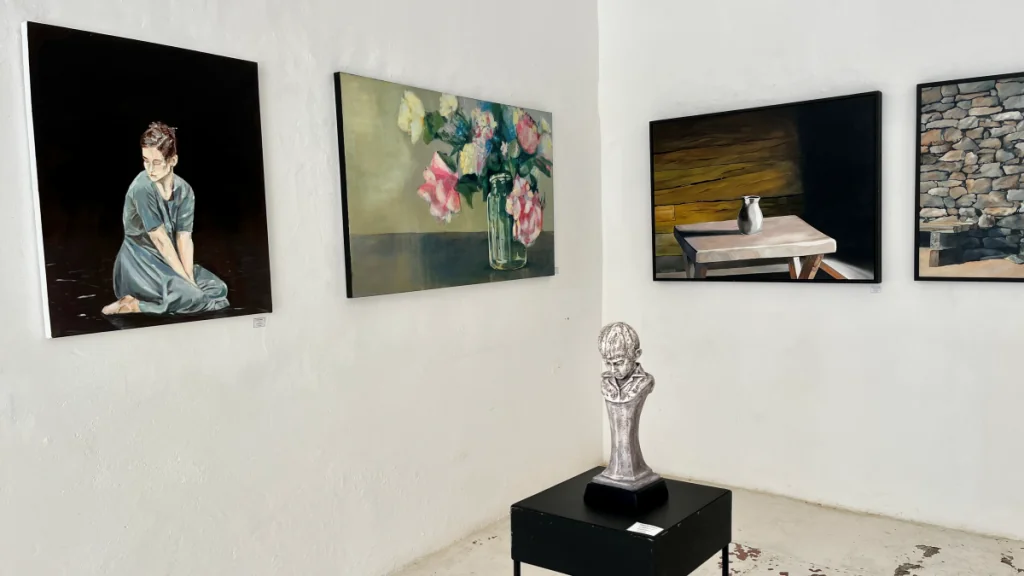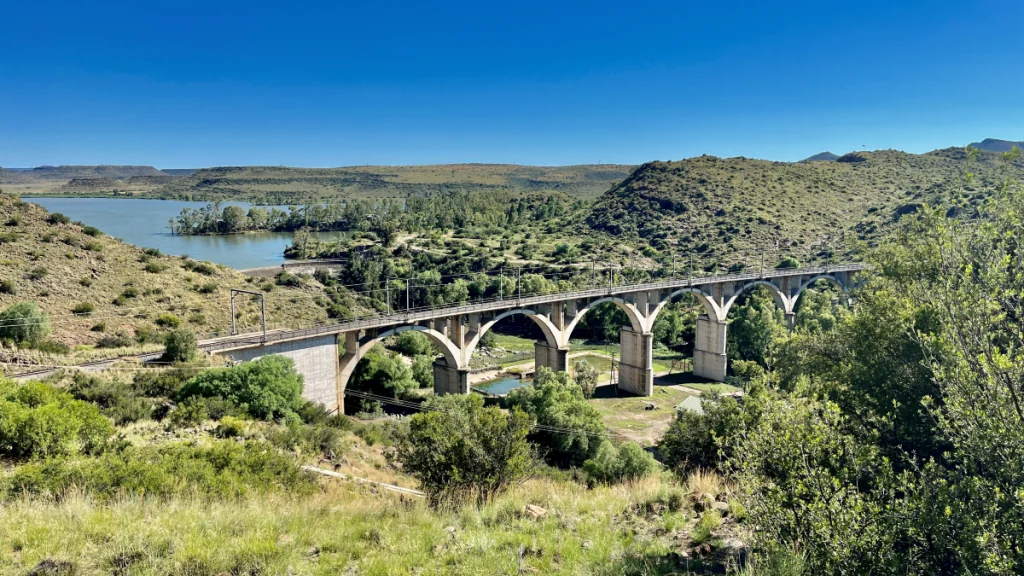Nieu-Bethesda is a small and incredibly charming village, secluded in the mountains of the Eastern Cape in South Africa. This little place has a lot to offer: charming accommodation, art, an artist's museum and a fossil centre.
Table of contents
Nieu-Bethesda in South Africa
Nieu-Bethesda is a village that surprises. Despite its small size and remote location, it attracts a relatively large number of tourists. The former church town is now home to several cosy guesthouses and restaurants, as well as several interesting sights.



A charming little map, found in many places, shows where everything is located.

Nieu-Bethesda is located in the Karoo semi-desert region, in the Eastern Cape Province of South Africa.
Car journey to Nieu-Bethesda
We drove to Nieu-Bethesda from Bethulie, where we had spent the night before in an incredibly charming hotel filled with books. The journey took just over three hours, and towards the end we were surrounded by a beautiful, mountainous landscape. As we turned onto the desolate road towards Nieu-Bethesda, we almost wondered if something would actually appear at the end of the road...?

Sure enough, after a long, winding road we arrived.

The Bethesda Guesthouse
Our South African friends, Henri and Michelle, had booked us in at the The Bethesda Guesthouseand we humbly thank you for this. What a wonderful place! The small guesthouse is run by Ludolf and Carla, originally from Johannesburg, who longed for a quieter life in the countryside.

Every room, from corridors to offices, offers a thoughtful design full of details. Everything - paintings, cushions and decorative objects - contributes to the special and homely atmosphere.

Our room? Wonderful! We enjoyed a lovely four-poster bed, a large bathroom and a generous supply of coffee, tea and biscuits.



Perhaps the most memorable part was the breakfast, which was one of the most beautiful we've had in a long time: yoghurt and muesli in jars, flower-decorated fruit in a small glass bowl with a lid, and little green twigs adding that little extra something. An instagrammer's dream!



Art gallery
The following morning we spent half a day in Nieu-Bethesda, starting with a visit to the local art gallery.

A nice visit! Art is an individual experience. Here we found many paintings and sculptures that we liked.



The Owl House - Helen Martins museum
We then proceeded to one of the town's main attractions: The Owl House or the Helen Martin Museum, as it is also called.
Helen Martins was a special and eccentric woman who grew up in Nieu-Bethesda. She left the town for a life as a teacher, but after a failed marriage she returned to her home town in the 1930s to care for her ageing parents. She had a good relationship with her mother, while her father has been described as 'difficult'. When he died, she painted his room black and named it 'The Lion's Den'.

Helen Martins began her life's work by turning the home she had inherited from her parents into an art installation.


She employed various local people, including Koos Malgas, and with his help she created works of art in cement and glass. Martins was inspired by biblical texts and the Orient, as well as the poetry of Omar Khayyam and various works by William Blake.

The camel farm contains more than 300 sculptures, including many owls, camels and humans.





In 1976, when Martins was 78 years old, she took her own life by swallowing caustic soda. Today, Martin's house, known as 'The Owl House', is run as a museum, attracting many tourists.



Fossil centre
The small town of Nieu-Bethesda has another famous attraction, in addition to The Owl House, in the form of a fossil centre. The next famous resident is James Kitching, a palaeontologist who rose to fame when he collected dinosaur fossils in Nieu-Bethesda for the South African Museum. He later established one of the world's finest fossil collections, housed at the Bernard Price Institute for Palaeontological Research in Johannesburg.

Today there is a fossil centre in the middle of the village, which is very interesting to visit. The museum visit starts with a short film, and then you can look around the two exhibition rooms.



The museum staff will then show you how to extract a fossil from stone, which is a very time-consuming process.

Finally, if you wish, you can go to the place where most of the fossils have been found. Here, dinosaur skulls are still in the ground, and these are clearly demonstrated using water and skulls of the same species.



More to see in the neighbourhood
Nieu-Bethesda is an amazing little town that surprises! If you have travelled here and want to continue your adventure, you can go to Bethulie, where you'll find a charming 'book-themed' hotel and Boer War memorials. If you prefer, you can head down to the beautiful coastline, to places such as Jeffreys Bay and Tsitsikamma National Park.

Facts about Nieu-Bethesda in South Africa
- Country: South Africa
- Provins: Eastern Cape
- Location: At the foot of the Sneeuberge, about 50 kilometres north of Graaff Reinet.
- Language: Afrikaans, English, Xhosa etc.
- Founding: 1875
- Residents: More than 1 500
- The name: Nieu-Bethesda is Afrikaans for New Bethesda. The name is biblical, meaning 'place of flowing water'.
History in Nieu-Bethesda
- 19th century: The Uitkyk farm, which belonged to BJ Pienaar, was located on the site.
- 1874: The farmers in the area came together to form a village and church congregation.
- 1875: It was decided to buy the Uitkyk farm from Mr Pienaar's sons.
- 1878: The town of Graaff-Reinet agreed to the petition of the people. Reverend Charles Murray named the settlement Nieu-Bethesda in reference to the fountain and its biblical reference.
- 1886: The village was a municipality, but the church kept the properties, so residents had to pay two taxes. The town experienced growth until 1930.
- 1930s: The Great Depression, improved transport and the city's isolated location led to a mass exodus, leaving the city impoverished. Teacher Helen Martins returned to the city.
- 1945: Helen Martin's father died and Helen started to turn her home into a work of art. Local resident Koos Malgas helped her. Palaeontologist James Kitching collected vertebrates for the South African Museum.





















BP says:
Fantastic! Must say that Henri and Michelle's advice/tips are invaluable. You might not have discovered these wonderful gems on your own.
Just wondering where the black population is located. Is the class difference still so great that they do not own a guesthouse or restaurant for example.
What food is "typical" of South Africa? What is the price level of petrol, food and drink?
18 February 2024 - 16:07
Helena says:
Yes, our friends' tips have been great! And thanks for the great questions!
Yes, the class differences are huge. The black population is everywhere (they are the majority). You constantly see black South Africans working in restaurants, petrol stations, shops, as guides etc etc and you see them everywhere in the cities of course. And in all poor areas and shanty towns. Yes, if you generalise, the white population is richer. We book accommodation through Booking.com, in the slightly lower price range (usually paying about 600-700 SEK/night, often including breakfast). So far, no guest house has had black owners (not what we understood anyway).
We will tell you more about the food! South Africa is multicultural. The Afrikaners (white Afrikaans speakers) like to eat "braai" (grilled food). There is also a kind of corn porridge (pap) that can be eaten as a carbohydrate, and biltong (dried meat) is popular. Also a lot of hamburgers, eggs & bacon and such ...
19 February 2024 - 5:07
Lena - good for the soul says:
But my goodness. How many sculptures can you have in a garden 🙂 You really get to experience exciting and odd things! Fun to take part in!
Hug Lena
19 February 2024 - 13:02